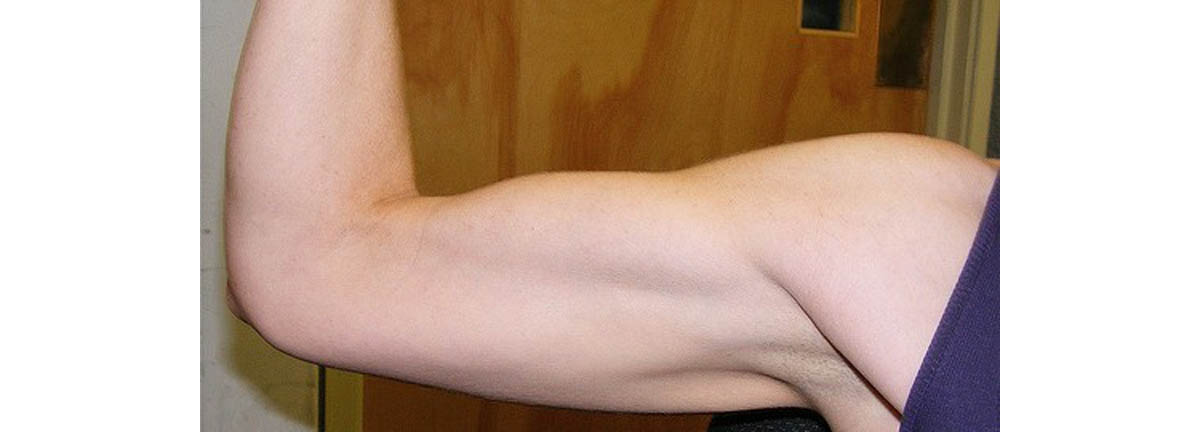Table of Contents
There’s a bit of a biology lesson before we get into your actionable steps here. So sit back, have a pen and paper to hand, and prepare for muscle building biology 101.

The Two Types of Muscle Growth
Muscle growth (referred to as hypertrophy) comes in two forms – sarcoplasmic and myofibrillar hypertrophy.
These sound like big, complicated scary words, but it’s actually fairly simple.
Sarcoplasmic hypertrophy refers to when your muscles grow in size due to an increase in fluid carrying substances in the muscle cells. The cells themselves stretch and get bigger, and the muscle swells slightly. This happens in miniscule amounts, so you won’t notice a difference from one workout to the next, but over time you’ll see an increase in size.
This type of hypertrophy occurs most when you perform slightly higher rep sets (for argument’s sake say 10 or more per set, although it’s not quite so strict as that) with lighter weights, a longer time under tension and slower repetition tempos.
Myofibrillar hypertrophy is slightly different. This is more to do with heavy training, explosive speed and power. This is the type of muscle growth you’d associate with weightlifters and sprinters. The muscle gets bigger due to an increase in density of the fibers. You’ll attain myofibrillar hypertrophy from heaving, powerful training and performing sets of five or below with heavy weights.
As you can see, neither of these approaches fit exactly into the traditional bodybuilding set and rep schemes. And this is probably why those guidelines are given – they don’t focus on either sarcoplasmic or myofibrillar hypertrophy, rather they’re a combination of both.
This means that if you were to just pick one rep range, then three sets of eight to 10 wouldn’t be a bad route to go down. You’d get some pretty good gains from it. But pretty good isn’t enough – when it comes to building muscle, only the best results will do.
Setting Up Your Muscle Gaining Plan
You’re probably got ideas running through your head of how you’re going to combine weightlifting with powerlifting and sprinting, then throw in some traditional bodybuilding work, muscular endurance training and any other set and rep ranges you can think of to make sure you cover all your basis, but it really doesn’t need to be that complicated.
There are two ways you can go about incorporating every different rep range into your routine.
The first way is to break your training down into blocks and focus on a different quality in each one.
This works well if you make each block three to four weeks long and cycle between them. It also requires very little planning as you can stick to exact the same workout schedule and even the same exercises, yet still get the best of everything. For example, your chest, shoulders and triceps workout may look something like this –
Exercise Sets and Reps
Bench Press 6x3 (block 1) 4x8 (block 2) 3x15 (block 3)
Incline Dumbbell Press 4x4 (block 1) 3x10 (block 2) 3 x15 (block 3)
Barbell Military Press 6x3 (block 1) 4x8 (block 2) 3x15 (block 3)
Dips 2x6 (block 1) 3x10 (block 2) 2x20 (block 3)
All you need to do here is change the weights in each block according to how many sets and reps you have to hit. You can use the same format for every workout.
The second option is to have an un-phased workout that utilizes strength, bodybuilding and endurance training every week. This works best with an upper body/ lower body split.
Workout 1 – Upper Body.
Two chest, three back and two shoulder exercises, each performed for three to five sets of three to six reps, plus two bicep and two tricep exercises for three sets of eight to 10 each.
Workout 2 – Lower Body.
Two quad and two hamstring exercises, each performed for three to five sets of three to six reps, plus two calf and two ab exercises for three sets of eight to 10 each.
Workout 3 – Upper Body.
Three chest, three back and three shoulder exercises, two of each performed for three sets of eight to 10 reps and one for two sets of 15, plus one bicep and one tricep exercise for two sets of 15 to 20 each.
Workout 3 – Lower Body.
Three quad and three hamstring exercises, two of each performed for three sets of eight to 10 reps and one for two sets of 15, plus one calf and one ab exercise for two sets of 15 to 20 each.
Break out of your comfort zone, ditch the standard set and rep schemes and make new muscle building headway.
- “Rep Out: The Truth About Rep Ranges And Muscle Growth”, By Cliff Wilson, Accessed on December 2nd, 2012, Retrieved from http://www.muscleandstrength.com/articles/truth-rep-ranges-muscle-growth
- Photo courtesy of newbirth on Flickr: www.flickr.com/photos/newbirth/2492773636
- Photo courtesy of elviskennedy on Flickr: www.flickr.com/photos/elviskennedy/4682764101

